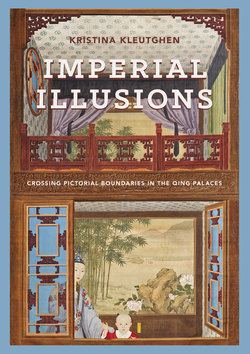Читать книгу Imperial Illusions - Kristina Kleutghen - Страница 10
На сайте Литреса книга снята с продажи.
ОглавлениеNOTE TO READERS
Unless otherwise indicated, all translations are my own, and all Chinese romanization is given in pinyin. Chinese names are given in Chinese order, with surnames first (e.g., Wang Youxue). Emperors are called by their Chinese reign names (as opposed to their temple names, given names, etc.). I have also followed Chinese placement of the word “emperor” following the reign name (i.e., Qianlong emperor, not Emperor Qianlong as in the Western tradition). Chinese lunar calendar dates have been translated into Gregorian form in the text, but are typically given in both this form and in their original Chinese form in the notes, in the sequence of emperor’s reign year/month/day (i.e., QL24/6/1 is the first day of the sixth month in the twenty-fourth year of Qianlong’s reign). “Qianlong” is pronounced “Chee-en-lung,” the initial q pronounced not with the hard k sound as in English but rather as if it were a ch, as in “China.”
Parts of chapters 3 and 5 originally appeared, in significantly condensed and altered forms, respectively in Orientations 42, no. 4 (2011): 73–79 and in Studies in Eighteenth- Century Culture 42 (2012): 81–102. General discussions of scenic illusion paintings and their Chinese artists have also appeared as “Intended to Deceive: Sino-European Painting at the Eighteenth-Century Chinese Court,” in Beyond Boundaries: East and West Cross- Cultural Encounters, ed. Michelle Ying-ling Huang (Newcastle: Cambridge Scholars, 2011) and in Chinese as “Tongjinghua yu Lang Shining yichan,” Gugong bowuyuan yuankan 161, no. 5 (2012): 77–88.
